
The term bug gets thrown around a lot, and in common language refers to just about any insect or insect-like creature. Technically speaking, (donning my nerd hat) true bugs are only those insects in the taxonomic order Hemiptera, suborder Heteroptera. Of course, we used to be able to say that true bugs included anything in the order Hemiptera, but as you may know, that order now includes hoppers (suborder Homoptera) – including cicadas, leafhoppers, etc.. It also includes insects in the suborder Sternorrhynca, which includes aphids, scale insects, mealy bugs, and others. All of this is obviously information you can easily apply in your daily life and conversations.
Example: (standing at the water cooler) “So hey, Joe, don’t you think it’s crazy that mealy bugs are Hemipterans now? It’s just weird, right?” (Joe punches you in the stomach and gives you a wedgie)
Ok, but whether or not your knowledge is appreciated by others, sometimes it’s just nice to know things. So if you’re interested, here are some tips for distinguishing true bugs from other insects.

Heteropterans are characterized by a few different features. The easiest to see in the field are located on its back. Adult true bugs have a triangle structure (scutellum) between their wings. Technically, that triangle is located right behind the pronotum, which is the structure right behind its head. The triangle can vary greatly in size and shape, but it is (nearly?) always there, as long as the bug is a full adult. We’ll talk nymphs later…
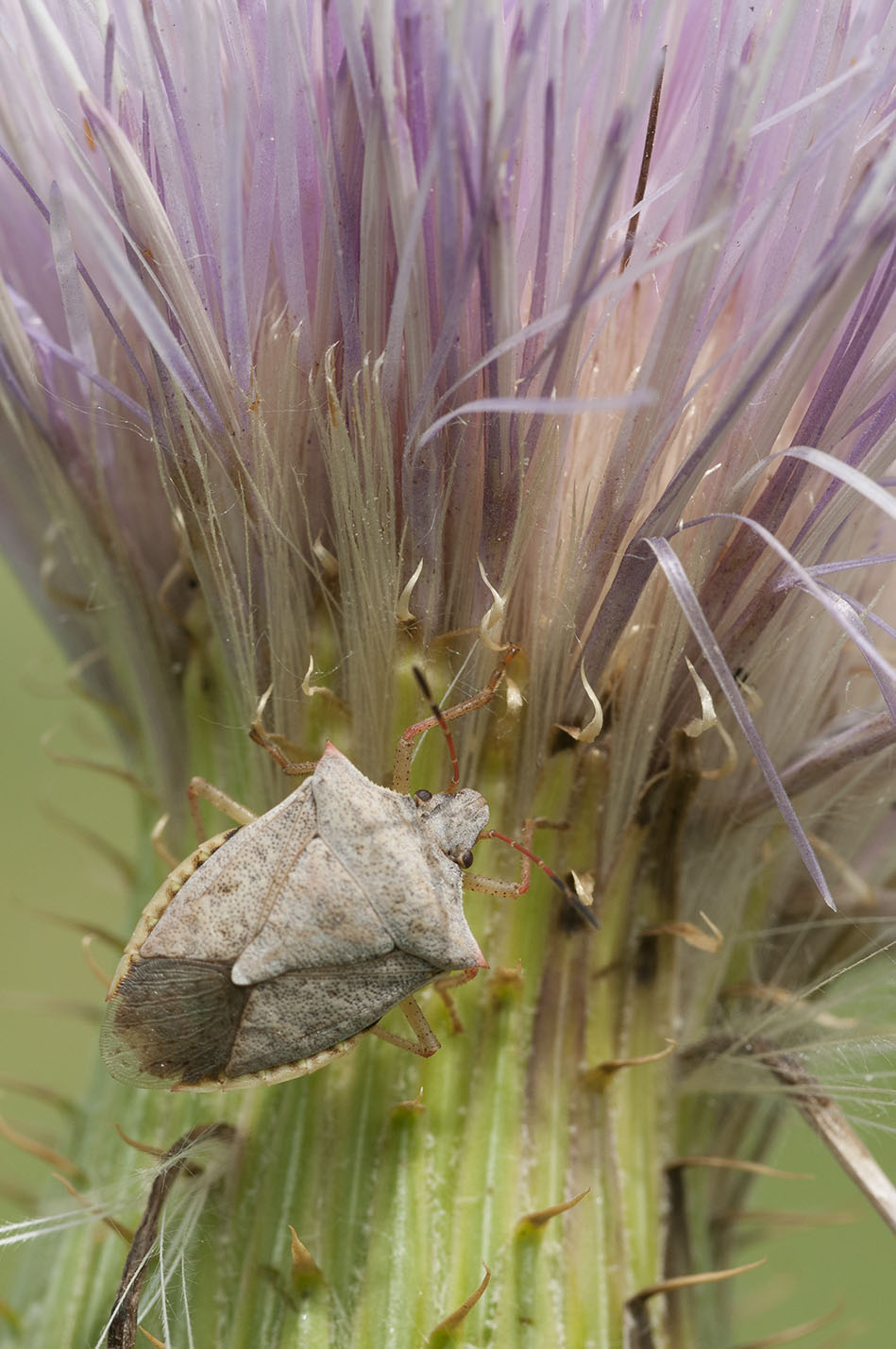
The other distinguishing features on a bug’s back are its wings, which are crossed over each other at rest. The base of each wing is thickened and solid, but the tip is membranous and often transparent. As a result the folded wings have a two-toned appearance, which, combined with the triangular scutellum, is fairly easy to recognize. (Bonus knowledge: bugs actually have FOUR wings, but you rarely see the other two unless the bug is flying or dead, which doesn’t help much when you are trying to identify a little critter scurrying away from you.)

For comparison, beetles (which are NOT bugs) have two hard shells, called elytra, covering their wings. When they fly, they have to lift those elytra up out of the way. This makes them look a little like a DeLorean with its doors open.
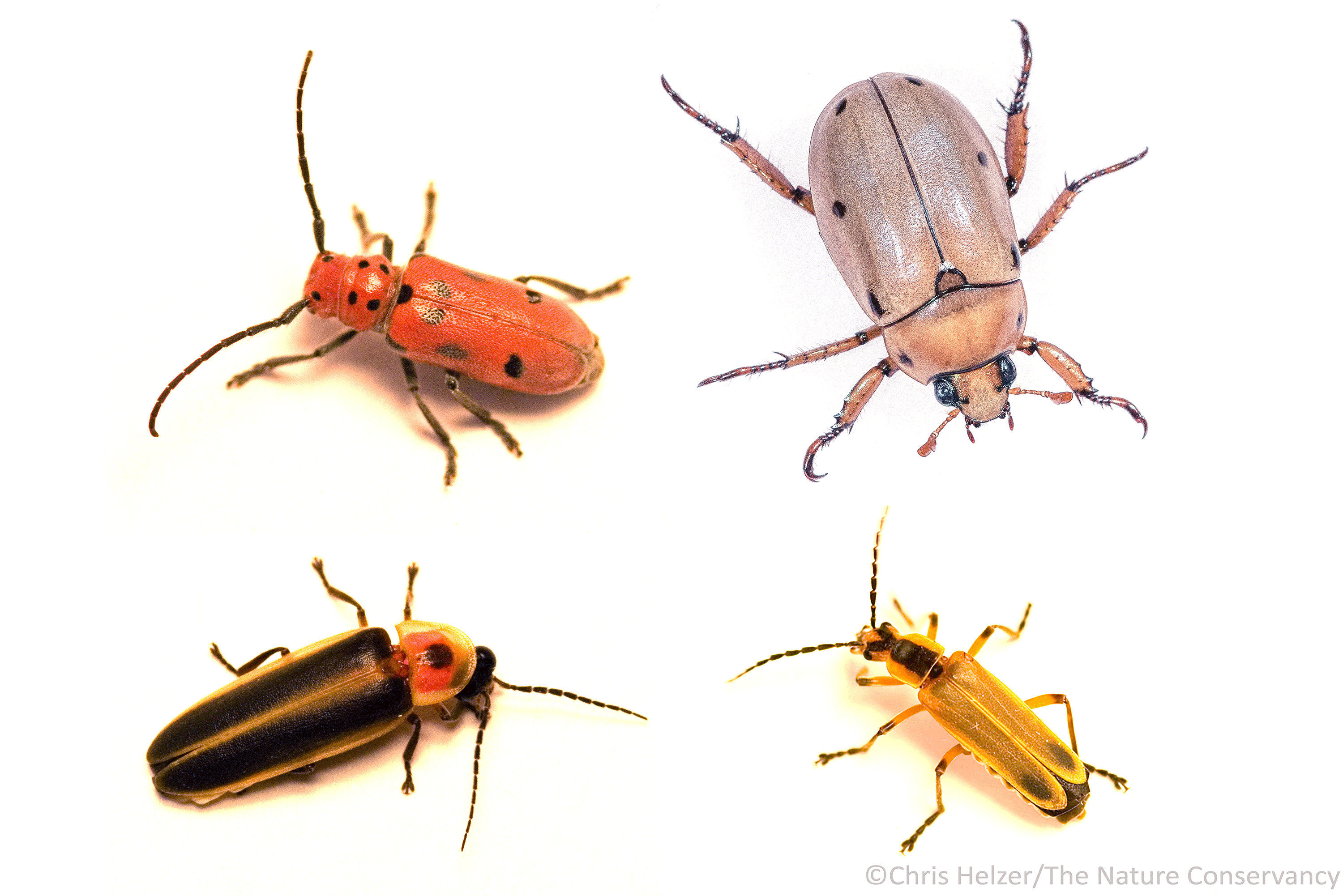
The other characteristic of bugs to look for, if you have the opportunity, is the mouth. True bugs have a long segmented proboscis, through which they suck up their food. This feature can be helpful in distinguishing bugs from beetles, which often have distinct mandibles, but not so much from creatures like cicadas, leaf hoppers or other Hemipterans (see first paragraph), which also have sucking mouthparts. When feeding, a bug will insert its proboscis into a plant (or, in some cases, another insect). The rest of the time, bugs keep their proboscis tucked up underneath their body, making it difficult to see.
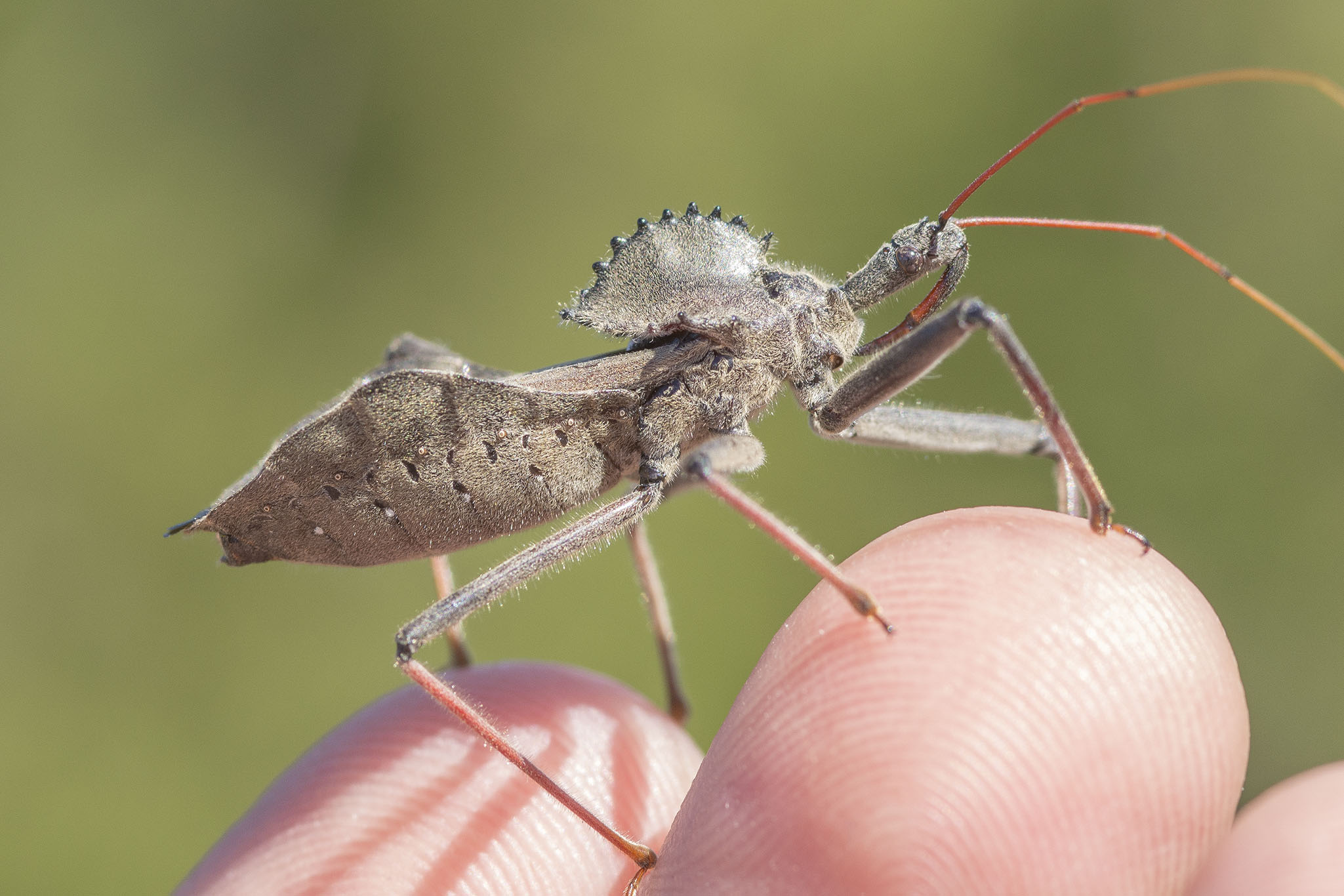
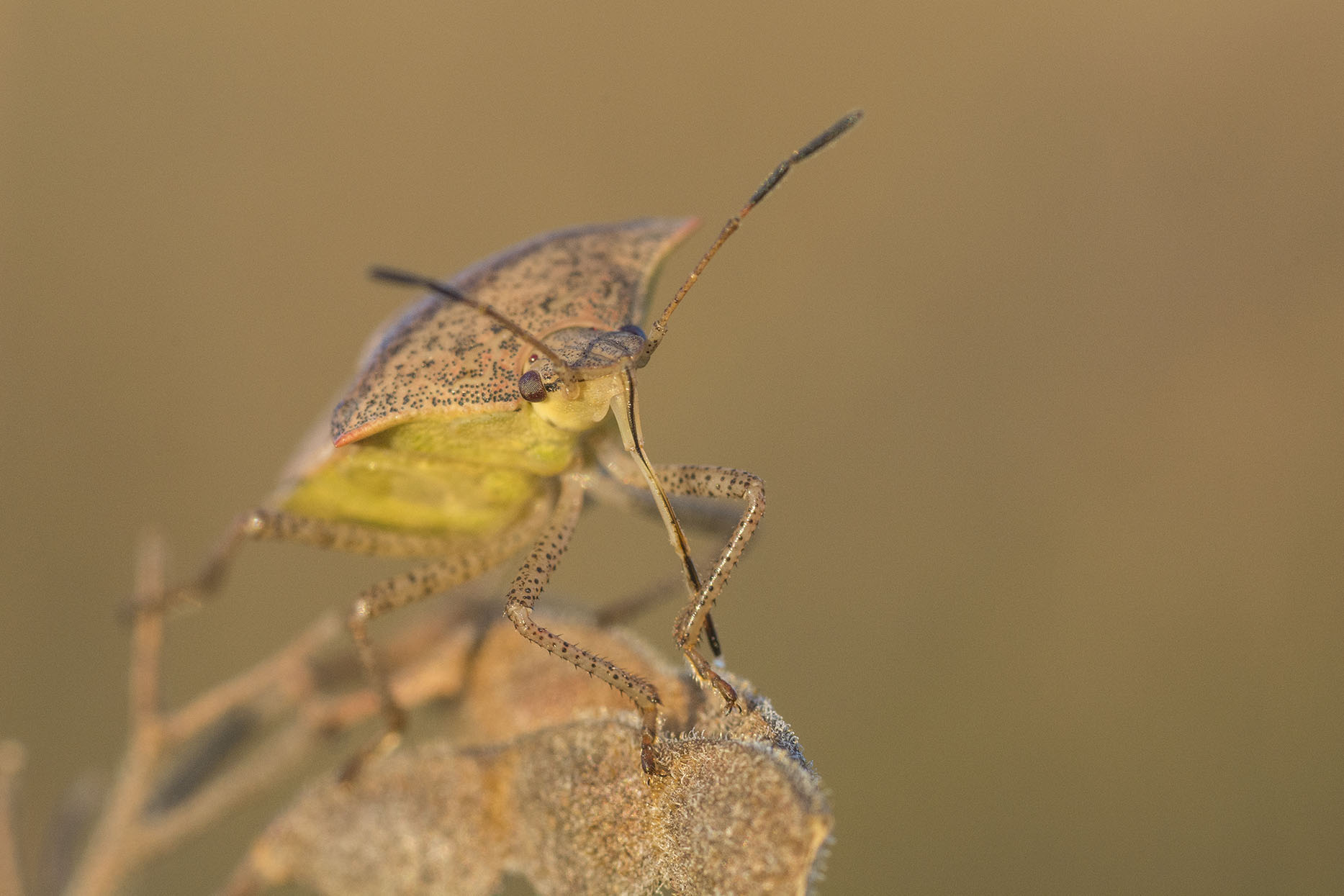
Immature bugs can be a lot more difficult to identify. Bugs go through incomplete metamorphosis; they start as an egg, hatch as a tiny nymph, then molt several times as they grow before their final molt into an adult. If you’re hankering for another wedgie, the technical term for this life cycle is hemimetabolous.
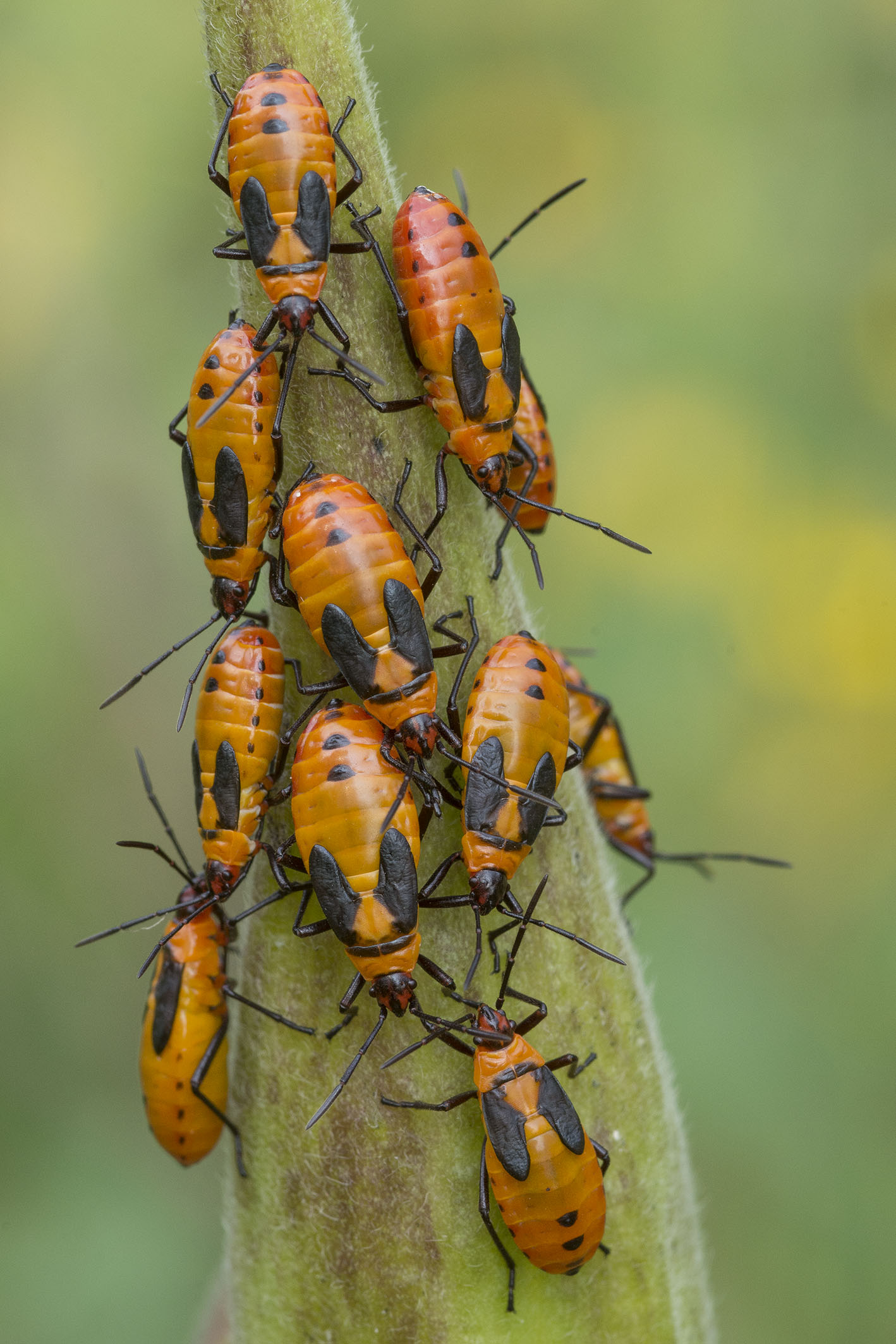
Nymphs resemble adults fairly closely, but have only little stubs for wings (which get longer as they grow and molt). Bugs don’t get functional wings until their final molt into adulthood. Besides limiting their movement, this lack of full wings also makes bugs hard to identify using the earlier tips. You can still look for their proboscis to distinguish them from beetles, but otherwise identification is tough, unless they happen to be clustered around adults of the same species.
Knowing that the term bug applies only to a select group of insects is helpful. Whenever you hear someone use the word colloquially, referring to a beetle, grasshopper, or even spider, you can smile smugly to yourself. In the right situations, you can even make a helpful correction, spreading your knowledge around a little. Just be careful of your audience. Smug corrections to the wrong people can lead to some significant discomfort in your lower torso…

You are really brave with that Wheel Bug on your finger
I usually read your posts and just go on with my day – having enjoyed the pictures or learned something nifty. But I have to comment on today’s post. I learned something and it was funny! I will try not to be too smug however. Thanks for all of your posts. I really enjoy them.
Son of a gun. Never noticed before. https://i.pinimg.com/736x/f3/22/ca/f322ca4737958e0b19c3db5d0bc050d0.jpg
I had a stink bug in my living room a few days ago. I captured it and put it outside. It froze where it landed. I started thinking about your “Thawing Frozen Bugs; The Grand Experiment” post that evening.
I got the stink bug and put it in a covered glasses. It had been outside in 10 degree F (with below zero wind-chill) for a few hours. When I woke up the next morning the thing was alive. Now I am wondering if the stink bugs I have been removing from my house during the winter have all been the same individual that keeps coming back inside.
Hi Chris – Just a little off putting when you joke about physical assault and wedgies (near sexual assault). Haven’t we gotten past this kind of locker room talk? If we want to make science and nature accessible to all we need to make sure that everyone is comfortable with our banter. Your blog post would have been equally effective without the joking violence etc. Thanks for your consideration of this, Tom Prunier
On Mon, Feb 11, 2019 at 2:55 PM The Prairie Ecologist wrote:
> Chris Helzer posted: ” Giant milkweed bugs – adults and nymphs – on > butterfly milkweed, Lincoln Creek Prairie, Aurora, Nebraska. The term bug > gets thrown around a lot, and in common language refers to just about any > insect or insect-like creature. Technically speaking, (do” >
I don’t think Chris was joking. It sounds more like he is recounting things that have happened to him.
What a terrific post. I confess I started laughing about halfway through, remembering the discussions I used to have with a more scientifically-minded friend. My first car was a VW, and I consistently called it a “VW Bug.” He insisted that I should call it a Beetle. When I finally pinned him down for an explanation, he said, “Well, it has to be a beetle. It has a hard shell.”
I’ve found a few milkweed pods covered in milkweed bugs of every size and shape, and it’s fascinating to see. Somewhere, I have a photo of a milkweed bug that I took while lying on the ground, looking up at it. It has its wings open and spread — I need to find the photo and count the wings!
Thanks Chris for this very educational bugs 101
Love this. Very informative and fun to read. Nice to be able to laugh and learn!
Thanks for the tutorial on bugs. Last summer was my first year for milkweed pods & significantly larger plants. Between dripping, sticky goop and orange bugs everywhere, I was initially freaked out! I had been learning all I could about birds, native plants, then butterflies. Now I had to add bugs to the list! I forgot a lot of what I had learned from science class in Jr. & Sr. High. So it’s nice to have fun overviews like this to read. Thanks again.
Excellent post! I didn’t know the difference between bugs and beetles. Thank you! Great photos that help with the “what is that?” questions.